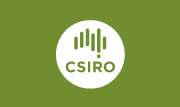2011 Report
I Great gains have been made over the past year in our understanding of the phylogenetic relationships of Acacia. We have now sequenced six DNA regions for over 600 species and most species have duplicate samples. We now have detailed resolution of most species groups. We will continue to add samples throughout the year with a goal of having a phylogeny of 800 species soon. With this data we are now mapping on various morphological, environmental and insect association data. This data analysis method approach allows us insight into how and when Acacia changed in response to past environmental changes. This data is especially rich in the GIS environmental data described here (insert link to Carlos’ page).
For Wattle Day and Biodiversity Month, September 2010, a display portraying a phylogenetic tree of Acacia was set up in the ANBG using over 100 live Acacia plants:
www.anbg.gov.au/gardens/whatson/events/2010-tree-of-trees/index.html
A new section of the Atlas of Living Australia has a detailed Acacia section:
www.ala.org.au/explore/themes/wattles/
Our Acacia 'Tree of Trees' is summarised there.
www.ala.org.au/explore/themes/wattles/joe-miller/
Acacia publications in 2011:
Miller, J.T ., D. M. Murphy, G. K. Brown, D. M. Richardson and C. E. González-Orozco. 2011. The evolution and phylogenetic placement of invasive Acacia species Diversity and Distribution .
Miller, J.T . and C. Miller. 2011. Acacia seedling morphology: Correlation of juvenile leaf forms and seed weight. Australian Journal of Botany. 59: 185-196 .
Richardson, D.M., Carruthers, J., Hui, C., Impson, F.A.C., Miller, J.T., Robertson, M.P., Rouget, M., Le Roux, J.J. & Wilson, J.R.U. 2011. Human-mediated introductions of Australian Acacia species—a global experiment in biogeography. Diversity and Distributions .
Gallagher, R., M.R. Leishman, J.T. Miller, C. Hui, D.M. Richardson, J. Suda and P. Trávníček . 2011. Genome size as a predictor of invasion success and trait variation in Australian acacias. Diversity and Distributions .
Gibson M.R., D.M. Richardson, E. Marchante, H. Marchante,, J.G. Rodger, G.N. Stone, M. Byrne, A. Fuentes-Ramírez, N. George, C. Harris, S.D. Johnson, J.J. Le Roux, J.T. Miller, D.J. Murphy, A. Pauw, M.N. Prescott, E.M. Wandrag, and J.R.U Wilson. 2011. Reproductive biology of Australian Acacia species: important mediator of invasiveness? Diversity and Distributions . |
![An Australian Government Initiative [logo]](/images/austgovt_canbr_90px.gif)

![An Australian Government Initiative [logo]](/images/austgovt_canbr_90px.gif)



